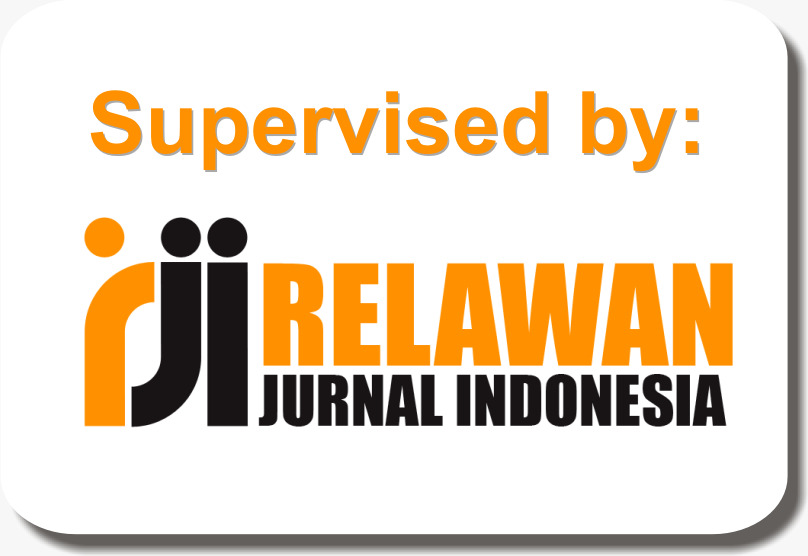Development of Content MOOCs: Designing a Creativity Assessment for Elementary School Students in a Learning Management System (LMS) with a Self-Paced Instruction Model
Abstract
Full Text:
PDFReferences
M. Shahzad, M. T. Shafiq, D. Douglas, and M. Kassem, “Digital twins in built environments: an investigation of the characteristics, applications, and challenges,” Buildings, vol. 12, no. 2, p. 120, 2022. [Online]. Available: https://doi.org/10.3390/buildings12020120
R. T. Lintangesukmanjaya, A. Mahendra, S. Anugrah, B. K. Prahani, D. Dwikoranto, M. Satriawan, and I. A. Rizki, “A EFA analysis of digital technology teaching materials in improving students' critical thinking in physics learning,” JPPS (Jurnal Penelitian Pendidikan Sains), pp. 23–38, 2024. [Online]. Available: https://doi.org/10.26740/jpps.v14n1.p23-38
O. Anuyah, A. M. Conrado, C. Carlson, H. Gilbride, and R. Metoyer, “Exploring the barriers and potential opportunities of technology integration in community-based social service organizations,” ACM J. Comput. Sustain. Soc., vol. 1, no. 1, pp. 1–28, 2023. [Online]. Available: https://doi.org/10.1145/3610720
M. Al-Emran and C. Griffy-Brown, “The role of technology adoption in sustainable development: Overview, opportunities, challenges, and future research agendas,” Technology in Society, vol. 73, p. 102240, 2023. [Online]. Available: https://doi.org/10.1016/j.techsoc.2023.102240
B. K. Prahani, J. Alfin, A. Fuad, H. Saphira, E. Hariyono, and N. Suprapto, “Learning management system (LMS) research during 1991–2021: How technology affects education,” Int. J. Emerg. Technol. Learn. (iJET), vol. 17, no. 17, pp. 28–49, 2022
A. Al Mansoori, S. Ali, S. A. Pasha, M. Alghizzawi, M. Elareshi, A. D. Ziani, and H. Alsridi, “Technology enhanced learning through learning management system and virtual reality googles: a critical review,” in From Industry 4.0 to Industry 5.0: Mapping the Transitions, pp. 557–564, 2023. [Online]. Available: https://doi.org/10.1007/978-3-031-28314-7_48.
H. Fibriasari, W. Andayani, T. T. A. Putri, and N. Harianja, “Learning management system now and in the future: Study case from the Indonesian university students,” Int. J. Inf. Educ. Technol. (IJIET), vol. 13, no. 1, pp. 158–165, 2023.
C. Kurniawan, O. Fajarianto, I. N. Sari, T. C. Wulandari, and E. Marlina, “Assessing learning management system (LMS) for the dairy farmer: Obstacles to delivering online learning content,” JTP–J. Teknol. Pendidik., vol. 24, no. 3, pp. 341–352, 2022. [Online]. Available: https://doi.org/10.21009/jtp.v24i3.31453
D. Olugbade, O. A. Ojo, and A. E. Tolorunleke, “Challenges and limitations of Moodle LMS in handling large-scale projects: West-African universities lecturers’ perspective,” J. Educ. Technol. Instr., vol. 2, no. 2, pp. 47–66, 2023.
Z. N. Khlaif, M. Ghanim, A. A. Obaid, S. Salha, and S. Affouneh, “The motives and challenges of developing and delivering MOOCs courses,” Educ. Knowl. Soc. (EKS), vol. 22, p. e23904, 2021. [Online]. Available: https://doi.org/10.14201/eks.23904
M. S. H. Munna, M. R. Hossain, and K. R. Saylo, “Digital education revolution: Evaluating LMS-based learning and traditional approaches,” J. Innov. Technol. Converg., vol. 6, no. 2, 2024. [Online]. Available: https://doi.org/10.69478/JITC2024v6n002a03
H. Yu, “Reflection on whether Chat GPT should be banned by academia from the perspective of education and teaching,” Front. Psychol., vol. 14, p. 1181712, 2023. [Online]. Available: https://doi.org/10.3389/fpsyg.2023.1181712
M. F. I. Honga, M. J. Rampe, A. Lihiang, and E. Pongoh, “Developing learning module of environmental pollution materials based on the Borg and Gall model to students at Public Junior High School 3 Tondano,” unpublished.
R. B. Indaryanti, H. Harsono, S. Sutama, B. Murtiyasa, and B. Soemardjoko, “4D research and development model: Trends, challenges, and opportunities review,” J. Kajian Ilmiah, vol. 25, no. 1, pp. 91–98, 2025. [Online]. Available: https://doi.org/10.31599/na7deq07
N. I. Hl, N. Nasruddin, A. E. Sejati, and A. Sugiarto, “Developing teaching material of research methodology and learning with 4D model in facilitating learning during the COVID-19 pandemic to improve critical thinking skill,” J. Kependidikan, vol. 9, no. 2, pp. 541–554, 2023. [Online]. Available: https://doi.org/10.33394/jk.v9i2.7110
R. T. Lintangesukmanjaya, A. Rizka, and A. B. Damarsha, “The Rasch model analysis: Case study in SDGs trend point 7 in physics learning based domicile,” J. Indones. Sustain. Dev. Plan., vol. 6, no. 2, pp. 173–184, 2025. [Online]. Available: https://doi.org/10.46456/jisdep.v6i2.608
T. T. N. Vu, “Understanding validity and reliability from qualitative and quantitative research traditions,” VNU J. Foreign Stud., vol. 37, no. 3, 2021. [Online]. Available: https://doi.org/10.25073/2525-2445/vnufs.4672
P. Coleman, “Validity and reliability within qualitative research for the caring sciences,” Int. J. Caring Sci., vol. 14, no. 3, pp. 2041–2045, 2022.
A. M. Al-Rahmi, A. Shamsuddin, U. Alturki, A. Aldraiweesh, F. M. Yusof, W. M. Al-Rahmi, and A. A. Aljeraiwi, “The influence of information system success and technology acceptance model on social media factors in education,” Sustainability, vol. 13, no. 14, p. 7770, 2021. [Online]. Available: https://doi.org/10.3390/su13147770
Y. N. Asrida, F. Amanda, and J. U. Fadilah, “Effectiveness and limitations on learning management systems (LMS) in learning and teaching: A systematic review,” ICOERESS, vol. 1, no. 1, pp. 141–152, 2024.
DOI: https://doi.org/10.29100/jipi.v10i3.9219
Refbacks
- There are currently no refbacks.

This work is licensed under a Creative Commons Attribution-ShareAlike 4.0 International License.
Website :Ýhttps://jurnal.stkippgritulungagung.ac.id/index.php/jipi/index
EmailÝ: jipi@stkippgritulungagung.ac.id

This work is licensed under a Creative Commons Attribution-ShareAlike 4.0 International License.




